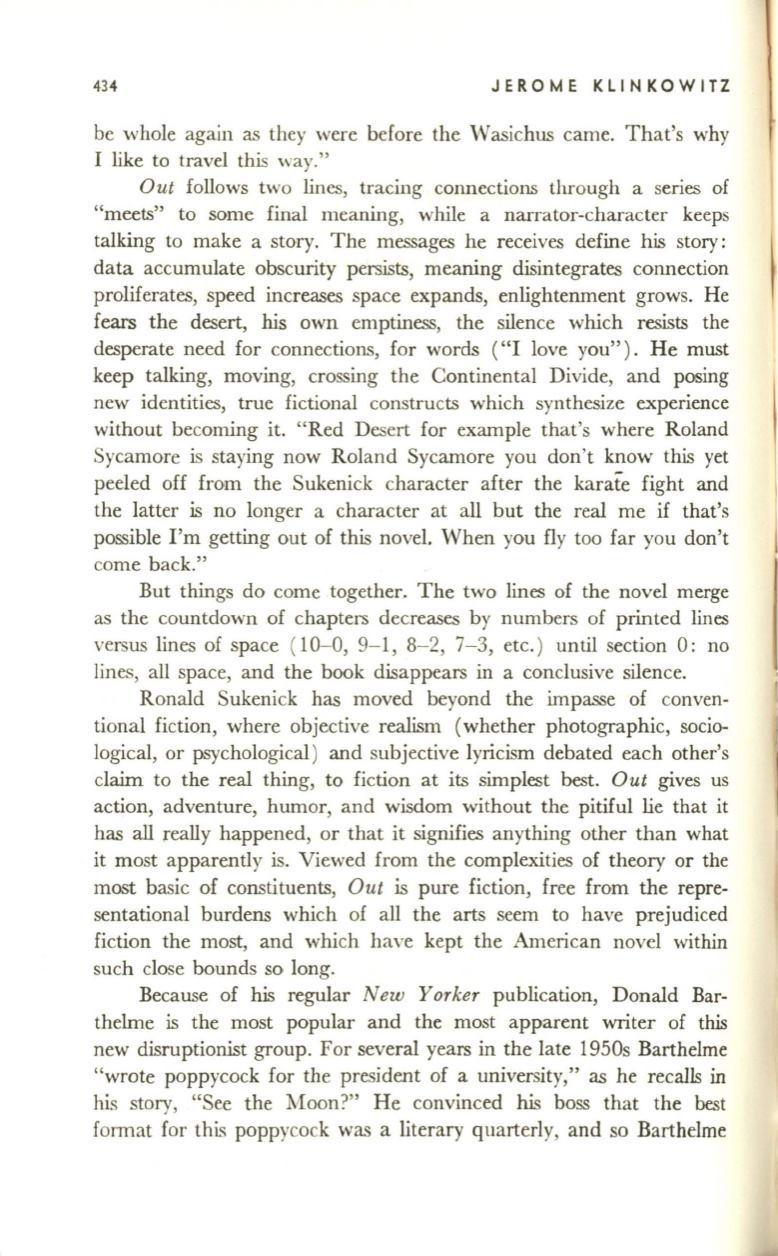
434
JEROME KLINKOWITZ
be whole again as they were before the Wasichus came. That's why
1 like to travel this way."
Out
follows two lines, tracing connections through a series of
"meets" to some final meaning, while a narrator-character keeps
talking to make a story. The messages he receives define his story:
data accumulate obscurity persists, meaning disintegrates connection
proliferates, speed increases space expands, enlightenment grows. He
fears the desert, his own emptiness, the silence which resists the
desperate need for connections, for words ("I love you") . He must
keep talking, moving, crossing the Continental Divide, and posing
new identities, true fictional constructs which synthesize experience
without becoming
it.
"Red Desert for example that's where Roland
Sycamore is staying now Roland Sycamore you don't know this yet
peeled off from the Sukenick character after the karate fight and
the latter is no longer a character at all but the real me if that's
possible I'm getting out of this novel. When you fly too far you don't
come back."
But things do come together. The two lines of the novel merge
as the countdown of chapters decreases by numbers of printed lines
versus lines of space ( 10- 0, 9- 1, 8- 2, 7- 3, etc. ) until section 0: no
lines, all space, and the book disappears in a conclusive silence.
Ronald Sukenick has moved beyond the impasse of conven–
tional fiction, where objective realism (whether photographic, socio–
logical, or psychological) and subjective lyricism debated each other's
claim to the real thing, to fiction at its simplest best.
Out
gives us
action, adventure, humor, and wisdom without the pitiful lie that it
has
all
,really happened, or that it signifies anything other than what
it most apparently is. Viewed from the complexities of theory or the
most
basic
of constituents,
Out
is pure fiction, free from the repre–
sentational burdens which of all the arts seem to have prejudiced
fiction the most, and which have kept the American novel within
such close bounds so long.
Because of his regular
New Yorker
publication, Donald Bar–
thelme is the most popular and the most apparent writer of this
new disruptionist group. For several years in the late 1950s BartheIme
"wrote poppycock for the president of a university," as he recalls
in
his story, "See the Moon?" He convinced
his
boss that the best
format for this poppycock was a literary quarterly, and so Barthelme


